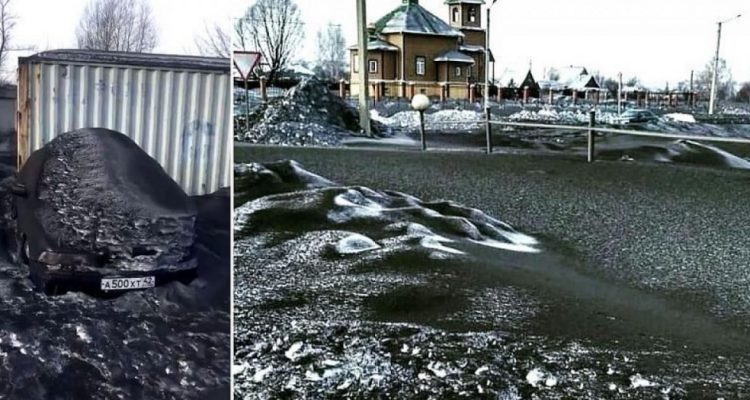Siberia: black coal covers several cities because of coal Thomas Boisson February 18, 2019

In countries where coal is the main resource, mass extraction can be responsible for astonishing weather events. This is the case in Siberia, where the fumes from coal power plants were so dense that atmospheric coal residues contaminated the snow, giving rise to real rains of black snow, covering some cities of the country. Beyond the spectacular aspect of the event, it is above all one of the many dangerous consequences of coal pollution.
Earlier this year, the polar vortex left vast stretches of North America covered in a scintillating blanket of ghostly white snow and ice. However, it didn't take long before this immaculate white took on a more disturbing black hue. Black snow was spotted in the Kemerovo region, in the southwest of Siberia, in the Kuznetsk basin, the mining center of the country.
Indeed, coal dominates the economy and the identity of the region so well that the Krasnaya Gorka, a museum (inside / outside) of coal extraction, is one of the main attractions of Kemerovo. The region's rich coal resources may have served residents well in terms of employment, but it is also a major cause of pollution. As a result, the cities of Prokopyevsk, Kiselyovsk and Leninsk were targets for coal-impregnated snowfall.
Residents are currently pointing the finger at a nearby coal-fired power plant. According to reports, the factory failed to filter the vapors enough. Andrei Panov, deputy governor of the Kemerovo region, also accuses coal-fired boilers, car exhaust and other coal-fired power plants.
It is not the first time that the inhabitants of Kemerovo have witnessed such a phenomenon. It was not until December that officials were suspected of painting the snow white to conceal the dust and dirt that had made it dark gray. And it's not just Russia. Temirtau, an iron-mining region in central Kazakhstan, was also covered in black snow earlier this year.
In response, residents sent Aliya Nazarbayeva, head of the Association of Environmental Organizations in Kazakhstan (and the youngest daughter of President Nursultan Nazarbayev), a letter in which it was written: "Snow is a litmus test, revealing the frightening scale of these harmful emissions. All the dust from the plant ends up in our lungs, and in those of our children. ”
Source: Siberian Times





